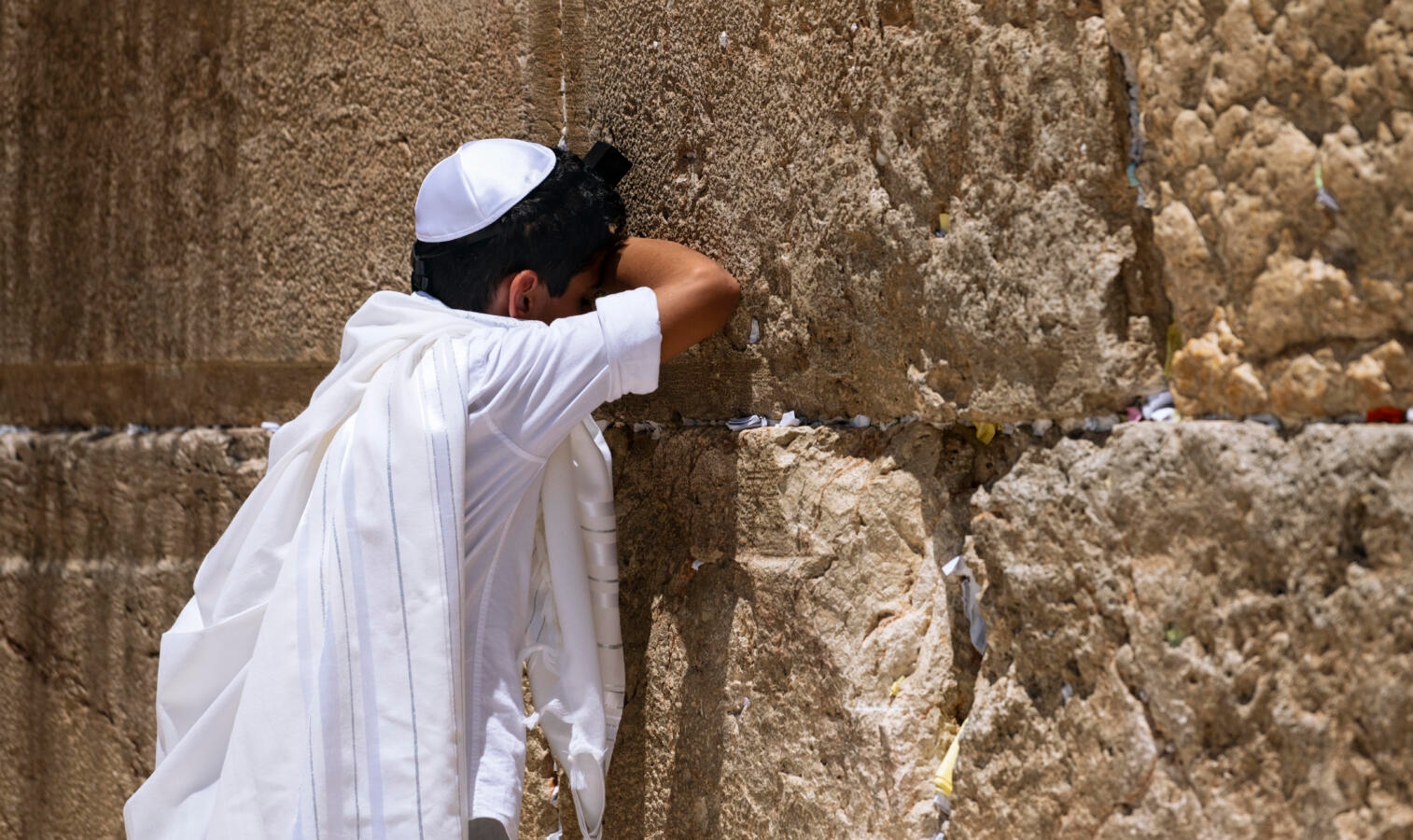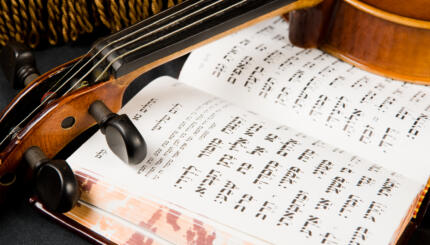Toward the end of the weekday morning service, just after the recitation of the Amidah, comes the Tachanun prayer, another silent prayer whose title translates to “pleading.” Divided into three sections — the first of which is said only on Mondays and Thursdays — the prayer is defined by its middle section, which is traditionally said while seated in a bent position, the head resting on the arm.
For those into positive, empowered prayer, Tachanun can be a challenge. Many Jewish prayers offer us opportunities for gratitude, to revel in the purity of the soul, bask in God’s love, and express wonder at creation. But Tachanun is not like these. It is far more sobering, and takes a much dimmer view of the world and of the people who inhabit it — including us.
The root of the word Tachanun is the Hebrew word chanan, which means to show favor, and much of the prayer is devoted to enumerating our failings and asking God to find favor in us even if we are unworthy. One typical passage reads:
Look down from heaven and see how we have become an object of scorn and derision among the nations. We are regarded as sheep led to the slaughter, to be killed, destroyed, beaten and humiliated. Yet, despite all this, we have not forgotten your name. Please do not forget us.
Both its tone and its language are reminiscent of the High Holiday liturgy and the bent stance we take with our bodies while reciting it is a modified version of the prostrations in the ancient Temple in Jerusalem, an act we do fully only once a year, when we fall to our knees in supplication on Rosh Hashanah and Yom Kippur. If Jewish rituals are meant to engage our minds as well as our bodies, Tachanun is a daily opportunity to engage the mind-body connection by adopting an ancient worship posture, albeit in modified form.

Help us keep Jewish knowledge accessible to millions of people around the world.
Your donation to My Jewish Learning fuels endless journeys of Jewish discovery. With your help, My Jewish Learning can continue to provide nonstop opportunities for learning, connection and growth.
A central theme of the first section is the request for forgiveness — not for our sake, but for God’s, to demonstrate God’s might in the world. This section includes a selection from the biblical story of Daniel, the prophet who feared the Babylonian exile would never end and pleaded for God’s compassionate forgiveness for an undeserving nation. It also recalls God’s covenant with Abraham, who was willing to sacrifice his son Isaac at God’s command. Both Daniel and Abraham found themselves in unbearable situations and cried out to God.
The second section begins with David’s urgent pleading in the wake of a seemingly unforgivable personal sin, asking God to save him from impending doom: “My soul is in anguish … turn God and set my soul free, save me for the sake of your love.” And the final section, the medieval poem Shomer Yisrael, talks about saving the remnants of the Jewish people from total annihilation.
This kind of language has long been difficult for many Jews. The liturgy scholar Rabbi Lawrence Hoffman has written that 19th-century Jews found Tachanun puzzling, seeing its insistence that human nature is irrevocably flawed and that we are dependent on God to cure the many ills that afflict us as inconsistent with an emerging modern ethos. Some modern thinkers have sought to recast Tachanun as a moment of reflection and spiritual refinement. Rabbi Zalman Schachter-Shalomi, the father of the Jewish Renewal movement, encouraged inserting moments of silence into the prayer to reflect on ways we might wish to change our behavior, suggesting that such moments were even more important than the words of the prayer itself. And Rabbi Rachel Barenblat has posited that Tachanun’s emphasis on our shortcomings is a reminder to cultivate humility and help us remain mindful of our mistakes.
I really want to jump on this mindfulness bandwagon, but it’s a struggle and Tachanun doesn’t always feel like it’s there to help. With its doom and gloom motifs and language about all that is wrong with us, it doesn’t feel like a fit for me as an optimistic person. And it’s not just the content that I struggle with – but also the length. As a child I was impatient with this prayer, which is placed in the liturgy just after the core prayers of the Shema and the Amidah, at the time the service seems to be winding down. I still feel that way as a 38-year-old. Tachanun comes at a moment when I’m ready to end my prayers and get on with my day.
But there is something unique about the physicality of this prayer that offers me a path to engagement with Tachanun. On good days, knowing that I can move my eyes downward, huddle into myself, and even disregard the words and think about my place in the world works for me. This can sometimes transport me back to my feelings around the High Holidays, whose prayers too are filled with physicality — the standing, the bowing, the primal sound of the shofar.
The High Holidays are a time when the possibility of a clean slate offers up the hopeful possibilities of a new year. The physicality of Tachanun can at times take me to that place, and from that place I find I can sometimes open my heart to the words of David: “Set my soul free, save me for the sake of Your love.”



